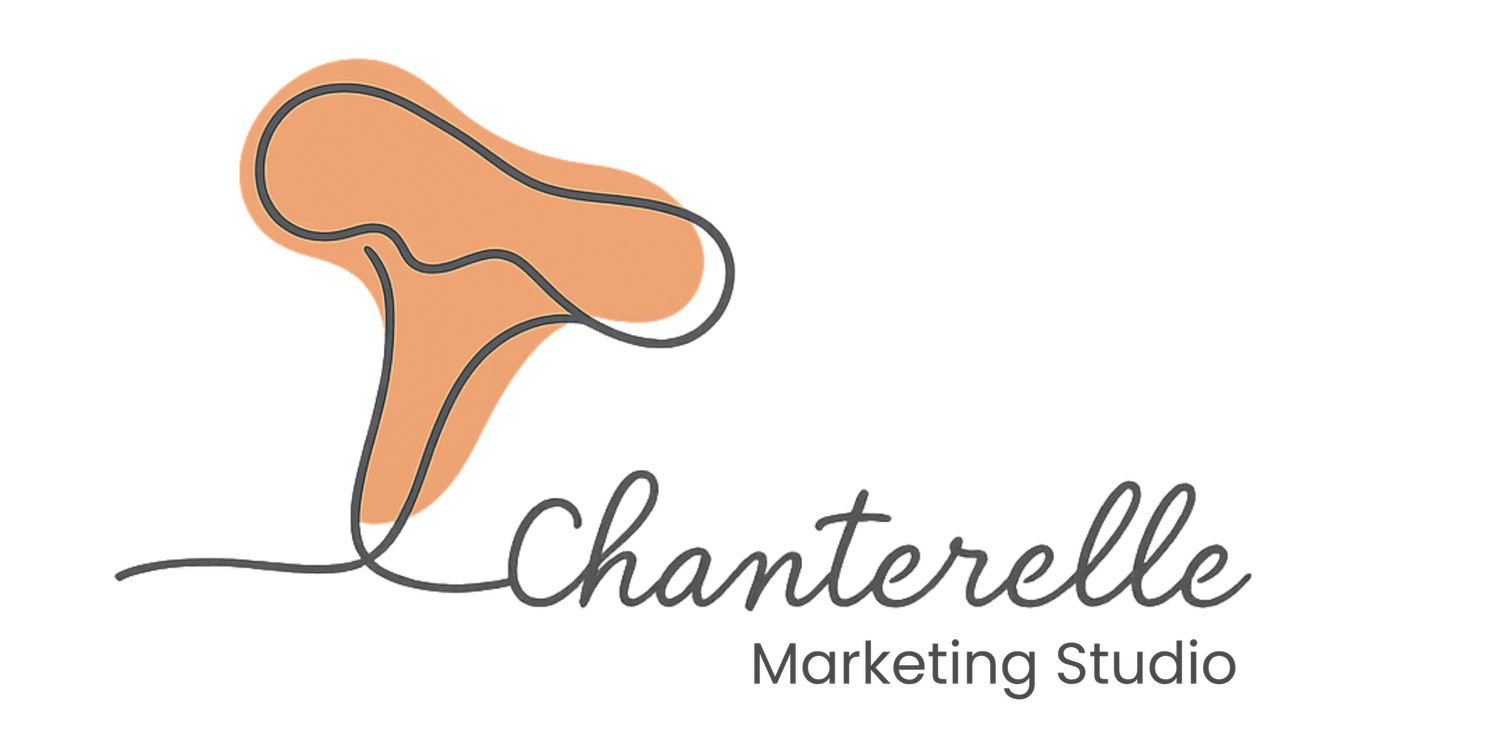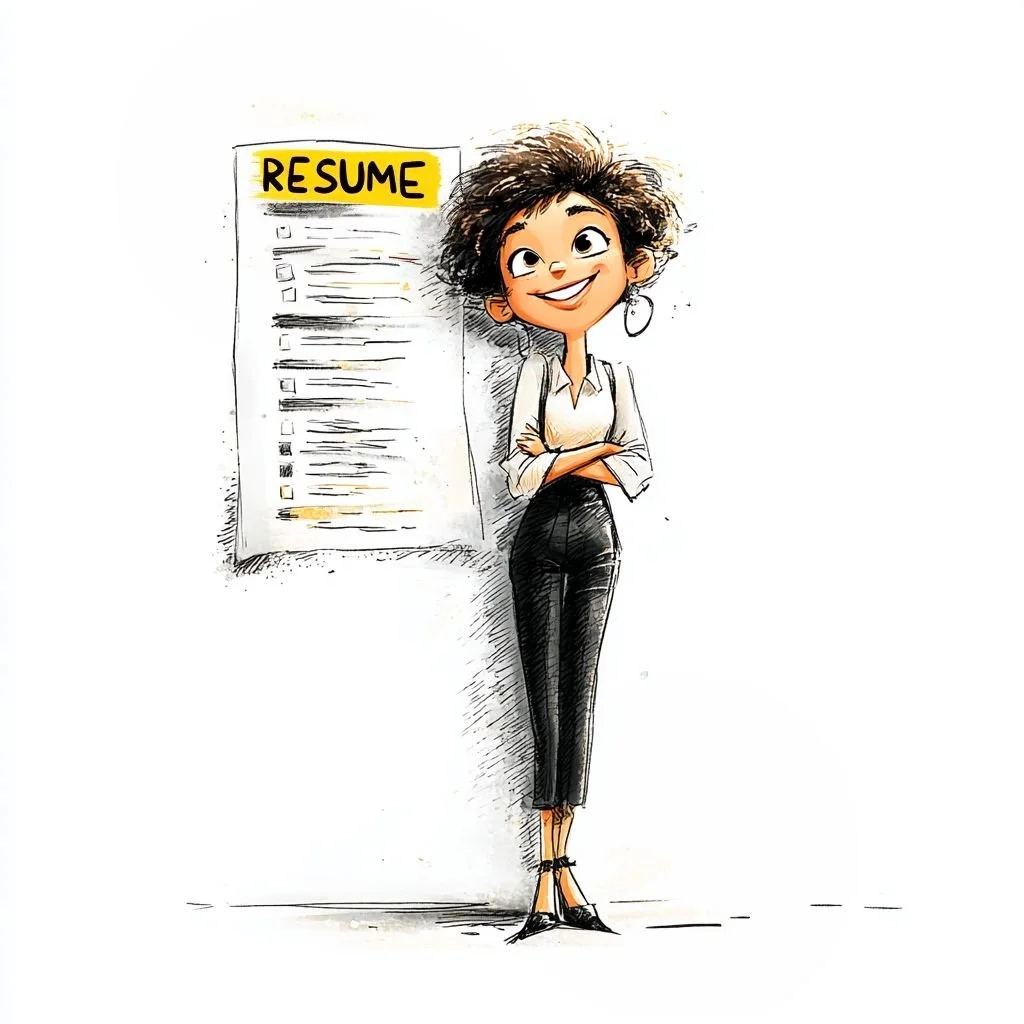Your Coaching Website Isn’t Converting: 5 Fatal Mistakes
Your website is gorgeous. You know this because everyone tells you so.
Your best friend said it's "so professional." Your sister raved about the colors. That one person on Instagram commented "🔥🔥🔥" and you took a screenshot because, honestly, validation feels good.
But here's the thing nobody's mentioning: you're not booking clients.
You're getting visitors—maybe from referrals, maybe from that Google Business Profile you set up, maybe from the occasional social post that doesn't flop. But they land on your site, poke around for thirty seconds, and vanish into the internet void.
No discovery call requests. No email signups. Just the ghost of missed opportunities and the nagging feeling that you're doing something wrong.
Here's the truth: your problem isn't your website design. It's your messaging.
And I'm about to show you exactly what's broken and how to fix it—without hiring a designer, learning to code, or setting your laptop on fire in frustration.
Mistake #1: You're Talking About Your Process Instead of Their Problem
Let me guess what your homepage says. (And if I’m wrong, then good on you!)
It says something about your "transformative framework" that combines mindfulness, neuroscience, and strategic goal-setting. Maybe there's a mention of your proprietary method with a name like "The Clarity Blueprint" or "The Authentic Self Journey."
Meanwhile, your potential client—let's call her Sarah—is sitting at her kitchen table at 11 PM, doom-scrolling because she can't sleep. She's thinking: I'm 47 years old and I have no idea what I want anymore. I feel like I'm disappearing into my own life.
Sarah doesn't give a single damn about your framework right now. She wants to know if you understand what it feels like to wake up every morning in a life that looks perfect on paper but feels hollow.
Here's what NOT to do:
“I use a transformative 12-week framework combining positive psychology, somatic practices, and values-based goal setting to help clients step into their authentic power.”
Cool. But also: what does that even mean?
What to do instead:
Lead with the exact problem they're losing sleep over:
"Waking up every day wondering 'is this all there is?'"
"Everyone thinks you have it all figured out. You know you're falling apart."
"You gave everything to your family. Now the kids are gone and you don't recognize yourself."
See the difference? One is about your credentials. The other is about their 3 AM panic spiral.
The fix:
Open your homepage right now. Count how many sentences are about you versus about them. If the ratio isn't at least 3:1 in favor of them, you have work to do.
Your homepage hero section should name their problem and hint at the transformation. You can explain your brilliant methodology later, after you've proven you actually get what they're going through.
Mistake #2: Your Services Page Is a Mystery Novel
You know what's on a lot of coaching websites?
"3-Month Transformation Package"
"Premium Coaching Experience"
"Signature Program"
And then... nothing. No details. No prices. No explanation of what actually happens.
It's like going to a restaurant where the menu just says "Food" and "More Food" and you're supposed to ask the waiter to explain everything while they judge your questions.
Nobody wants to feel stupid. Nobody wants to book a call just to find out what you're selling or discover they can't afford it.
Here's what people actually need to know before they'll even THINK about booking a call:
What's included (How many sessions? How long? What happens between sessions?)
Who it's for (Be specific. "Women navigating major life transitions" is better than "anyone seeking growth")
What results they can expect (Not guarantees, but realistic outcomes)
What it costs (Or at least "starting at $X" so they can self-select out if it's not in their budget)
What happens next (Do they book a call? Fill out a form? Sacrifice a chicken under the full moon?)
Example of what NOT to do:
"Transformative 1:1 coaching customized to your unique needs and goals"
Thanks, that tells me absolutely nothing.
“Nobody wants to feel stupid. Nobody wants to book a call just to find out what you’re selling or discover they can’t afford it.”
What to do instead:
"6 months | 12 bi-weekly 60-min sessions | Voxer support between calls | For women in midlife navigating divorce, empty nest, or major identity shifts | Investment: $3,600 ($650/month payment plans available)"
Now we're talking. Sarah knows exactly what she's getting, whether she qualifies, and whether she can afford it. No guesswork. No awkward "so...what does this cost?" call.
The fix:
Create a separate page for each distinct coaching package. Include an FAQ section right on the services page. Remove vague language like "transformative journey" and "holistic approach"—those words mean nothing to someone trying to decide if you're the right coach for them.
And for the love of all that is holy, put a clear button that says "Book a free consultation" or "Let's talk" or "Schedule your call." Don't make them hunt for it.
Mistake #3: Your About Page Is Your Resume
I've read approximately 10,000 coach About pages in my career, and most of them read like this:
"Sarah is a certified life coach with credentials from [Coaching Institute]. She holds a Master's degree in [Something Impressive] and has completed advanced training in [List of Things]. She has 15 years of experience in [Corporate Job] and is passionate about helping people live their best lives."
Congratulations, Sarah. You're very qualified. Also, you sound like every other coach on the internet.
Here's the problem: people don't hire the most credentialed coach. They hire the coach who makes them think, "Holy shit, she gets it. She's been where I am."
Your About page shouldn't be your LinkedIn profile. It should be your origin story.
What actually works:
Tell them about the moment everything changed for you. The breakdown. The divorce. The panic attack in the Target parking lot. The day you looked in the mirror and didn't recognize yourself.
Then tell them what you did about it. How you rebuilt. What you learned. Why you decided to help other people through the same mess.
Show them you've been in the dark, too. That's what creates trust.
A simple structure that works:
The Hook: Start with a moment. A confession. A truth bomb.
"I was 43 when I realized I'd spent two decades building a life that made everyone else happy—and made me miserable."Your Story: How you got from there to here. Keep it tight. This isn't your memoir.
Your Philosophy: What you believe about coaching. What makes you different.
Who You Help Best: Be honest about who you work with (and who you don't).
The Call to Action: What should they do next?
The fix:
Go read your About page right now. If it sounds like a resume, you're doing it wrong. Rewrite it like you're explaining to a friend why you became a coach. Keep one or two key credentials if they matter, but lead with the story.
People remember stories. They forget credential soup.
Mistake #4: You're Trying to Help Everyone (So You're Helping No One)
Let me take a wild guess at what your website says:
"I work with entrepreneurs, executives, parents, creatives, and anyone seeking personal growth and fulfillment."
So... everyone. You help everyone.
Which means when Sarah—our burned-out, empty-nester who just signed divorce papers—lands on your site, she sees "entrepreneurs" and thinks, Oh, this isn't for me.
Or she sees "anyone seeking personal growth" and thinks, That's too vague. This person doesn't specialize in what I need.
Here's the brutal truth: the more specific you are, the more people you attract.
"I help women in midlife navigate divorce and rebuild their identity" will book you more clients than "I help people reach their potential."
I know what you're thinking: But I CAN help other people! I don't want to turn away clients!
Listen. You can absolutely work with people outside your niche. But your website needs to speak to ONE primary person so clearly that they think you're reading their diary.
The fix:
Pick your primary person. The one you love working with. The one whose problems you could talk about for hours.
Then rewrite your homepage for THEM. Use the exact words they use. Reference the specific situations they're in.
If you're genuinely multi-niche (which, honestly, you probably shouldn't be in the beginning), create separate landing pages for each type of client. But your homepage? Lead with one.
Mistake #5: There's No Clear Next Step (Or There Are Too Many)
I see two versions of this mistake all the time:
Version A: The Buffet of Options
Your site has seventeen different calls to action competing for attention:
Download my free guide
Join my newsletter
Book a discovery call
Follow me on Instagram
Join my Facebook group
Watch my free masterclass
Take my quiz
Read my blog
Sign up for my challenge
And your visitor's brain just... short-circuits. They don't do ANY of it because they don't know which one matters.
Version B: The Ghost Town
Your site is beautiful. Your copy is compelling. But there's no clear next step. They love what they're reading, but they're not sure what to DO about it.
Both versions fail for the same reason: you're not making it obvious what action to take.
The fix:
Every page on your site should have ONE primary call to action. Usually, that's "Book a free consultation" or whatever you call your initial call.
You can have a secondary CTA (like email signup), but it should be visually less prominent.
Remove or de-emphasize everything else. I know you spent hours creating that lead magnet, but if it's not moving people toward booking calls, it's just noise.
Where to put your CTA:
Hero section of your homepage
End of your services page
End of your About page
As a floating button that follows them down the page (not annoying if done right)
Make it brain-dead simple. "Book your free call." "Let's talk." "Schedule now."
And please, for the love of all that is holy, make sure the button works and goes somewhere obvious.
Now What?
Look, I'm not here to blow smoke. These mistakes are costing you clients. Real people who need your help are landing on your site, not understanding what you do or how to work with you, and leaving.
But here's the good news: you don't need a $10,000 website redesign. You don't need to hire a fancy agency. You just need to fix your messaging.
Most of these fixes can happen in a weekend with a Google Doc, brutal honesty, and maybe some feedback from 2-3 people who actually fit your ideal client profile.
Your homework:
Audit your homepage for the you/them ratio
Add specifics to your services page
Rewrite your About page as a story, not a resume
Pick ONE primary niche and speak directly to them
Choose ONE primary CTA and repeat it everywhere
Do these five things, and I promise you'll start seeing more discovery calls booked.
Need someone to tell you what's actually broken on your website?
Book a Rebel Huddle session. For $99, I'll audit your website, tell you exactly what's not working, and give you a clear action plan to fix it. No fluff, no BS, just honest feedback and a roadmap.
Want to save this post? Pin it, bookmark it, send it to that coach friend whose website isn’t setting the world on fire … yet. And if you found this helpful, I'd love to hear what resonated—drop a comment!
Now go fix that website. Your future clients are waiting.
Get sane, simple marketing advice delivered to your inbox!
(It’s just a couple of times a month. Promise!)




